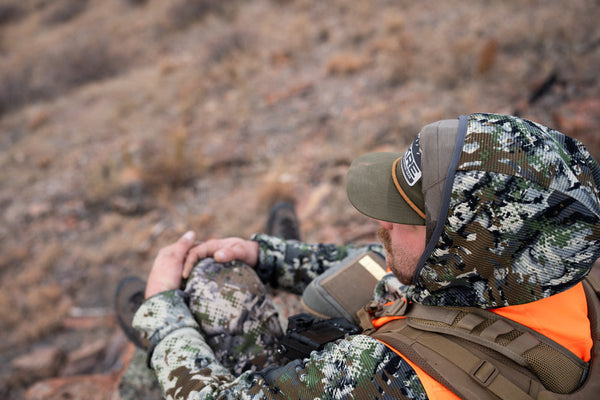Where to Hunt Mule Deer in Canada: Top Provinces and Tips for a Successful Hunt
Apr 18, 2025
Mule deer are one of Western Canada's most iconic big game animals. Known for their oversized ears, wary nature, and impressive antlers, mule deer offer a rewarding challenge to hunters across the Canadian West. Whether you’re a seasoned Canadian hunter or planning your first mule deer trip, knowing where to hunt mule deer in Canada—and how to prepare—can dramatically improve your odds of success. This guide highlights the top provinces, regional differences, and essential gear and tactics for a successful Canadian mule deer hunt.
Mule Deer Country Is Varied And Temperamental
SKRE Canada created the Mule Deer Bundle to facilitate success in the harsh environments these animals call home.
Shop Mule Deer Bundle
Understanding Mule Deer Habitat in Canada
What Makes Great Mule Deer Country
Mule deer in Canada thrive in open terrain, such as sagebrush flats, coulees, grasslands, and foothill regions leading into the Rockies. Ideal habitat includes:
-
Abundant shrubs and native grasses for forage
-
Seasonal cover, like willow draws and river breaks
-
Access to water and low human disturbance
-
Winter range near agricultural zones or south-facing slopes
These conditions are most prevalent in western provinces like Alberta, British Columbia, and Saskatchewan.

Public vs. Private Land Opportunities in Canada
Public Land (Crown Land):
Canada offers millions of acres of huntable Crown land, especially in British Columbia and Alberta. However, accessibility varies, and hunters should check provincial regulations for motorized vehicle restrictions and firearm rules.
Private Land:
In provinces like Saskatchewan and Alberta, much mule deer habitat overlaps with farmland. Access requires landowner permission, but this land often sees less pressure and can yield larger, more mature bucks.
Access Tip:
Use tools like iHunter and AlbertaRELM, and consult provincial Wildlife Management Unit (WMU) maps to identify Crown land, public lease land, and Block Management areas where hunting is permitted.
Top Provinces for Mule Deer Hunting in Canada
Alberta
Why it’s great: Alberta is widely regarded as Canada’s top destination for mule deer hunting. WMUs throughout the southern and central regions offer a mix of prairie, foothills, and mountain zones. Some zones are general tags, while others require limited-entry draws.
-
Hunting Styles: Spot-and-stalk and field edge ambush
-
Draw Info: Alberta uses a priority point system for limited-entry areas
-
Best Areas: WMUs 102, 118, 148, and foothill zones along Hwy 22
British Columbia
Why it’s great: BC offers longer seasons and generous bag limits in many regions. Mule deer are widely distributed throughout the Interior and Kootenays, particularly in dry grasslands, logged cuts, and alpine meadows.
-
Hunting Styles: Alpine hiking, glassing logged cuts, still-hunting
-
Tag System: No draw required in many regions; general licenses are common
-
Best Areas: Region 3 (Thompson), Region 4 (Kootenays), and Region 8 (Okanagan)
Saskatchewan
Why it’s great: While Saskatchewan is better known for whitetails, southwestern units near Maple Creek and Val Marie support healthy mule deer populations, especially in agricultural areas and native prairie.
-
Hunting Styles: Still-hunting coulees and windbreaks; stand setups near crops
-
Tag System: Resident-only mule deer licenses, usually general in the south
-
Best Areas: Wildlife Management Zones (WMZs) 2W, 4, 6
What to Expect from Each Region
Terrain
-
Expect everything from open prairie and coulees to rugged alpine in BC and Alberta
-
Be prepared for long hikes, glassing from ridge lines, and varying elevation
Weather
-
Early-season hunts (September–October) may be warm and dry
-
Late-season hunts (November) often bring snow and high winds—layering is essential
Hunting Style
-
Spot-and-stalk is dominant—glass deer at long distances, plan your stalk, and move in
- In farmland zones, ambush setups along field edges and bedding routes also work well
Tags, Licenses, and Regulations
-
Alberta: Combination of general and limited-entry (draw) mule deer tags. Non-residents must hunt with a registered outfitter.
-
British Columbia: Many mule deer regions are open to general license holders. Bag limits vary.
-
Saskatchewan: Residents may hunt mule deer with a regular license in certain zones. Non-resident mule deer hunting is limited and typically guided.
Pro Tip: Check provincial hunting guides early each year. Application deadlines for draws (especially in Alberta) often occur in the spring.
Mule Deer Country Is Varied And Temperamental
SKRE Canada created the Mule Deer Bundle to facilitate success in the harsh environments these animals call home.
Shop Mule Deer Bundle
Essential Gear for Mule Deer Hunting in Canada
Base Layers & Outerwear
Canada’s mountain winds and prairie mornings can be unforgiving. Layering is key.
-
Merino wool base layers (e.g., SKRE Kaibab 150 or 300) for moisture and temperature control
-
Insulated outerwear like the Guardian Late Season Jacket for warmth and
concealment

Optics
-
Binoculars: 10x42 or 12x50
-
Spotting Scope: Optional, but ideal for glassing long distances in the Rockies or open prairie
Footwear
-
Waterproof, high-ankle boots with aggressive tread
-
Gaiters for snow or brushy terrain
Backpack & Hydration
-
Lightweight daypack or meat-hauling frame
-
Water reservoir or insulated bottle
- Game bags and a field dressing kit
Pro Tips for a Successful Mule Deer Hunt
-
Scout Digitally: Use apps like iHunter, OnX Hunt Canada, or BaseMap to locate glassing knobs, bedding cover, and legal access points
-
Glassing is King: Spend more time behind the glass than on your feet—especially during prime hours
-
Play the Wind: Mule deer rely on scent. Approach from downwind whenever possible
- Know Your Target: Learn to age and judge mule deer before making your move
Conclusion
Whether you're hiking alpine ridges in British Columbia or glassing prairie draws in Alberta, knowing where to hunt mule deer in Canada is half the battle. Pair that with solid optics, smart layering, and proven stalking tactics, and you’ll be well on your way to punching your tag. Ready to gear up? Explore SKRE Gear’s performance-driven layering systems and camo designed for the demands of mule deer country—from early season to late snow.



